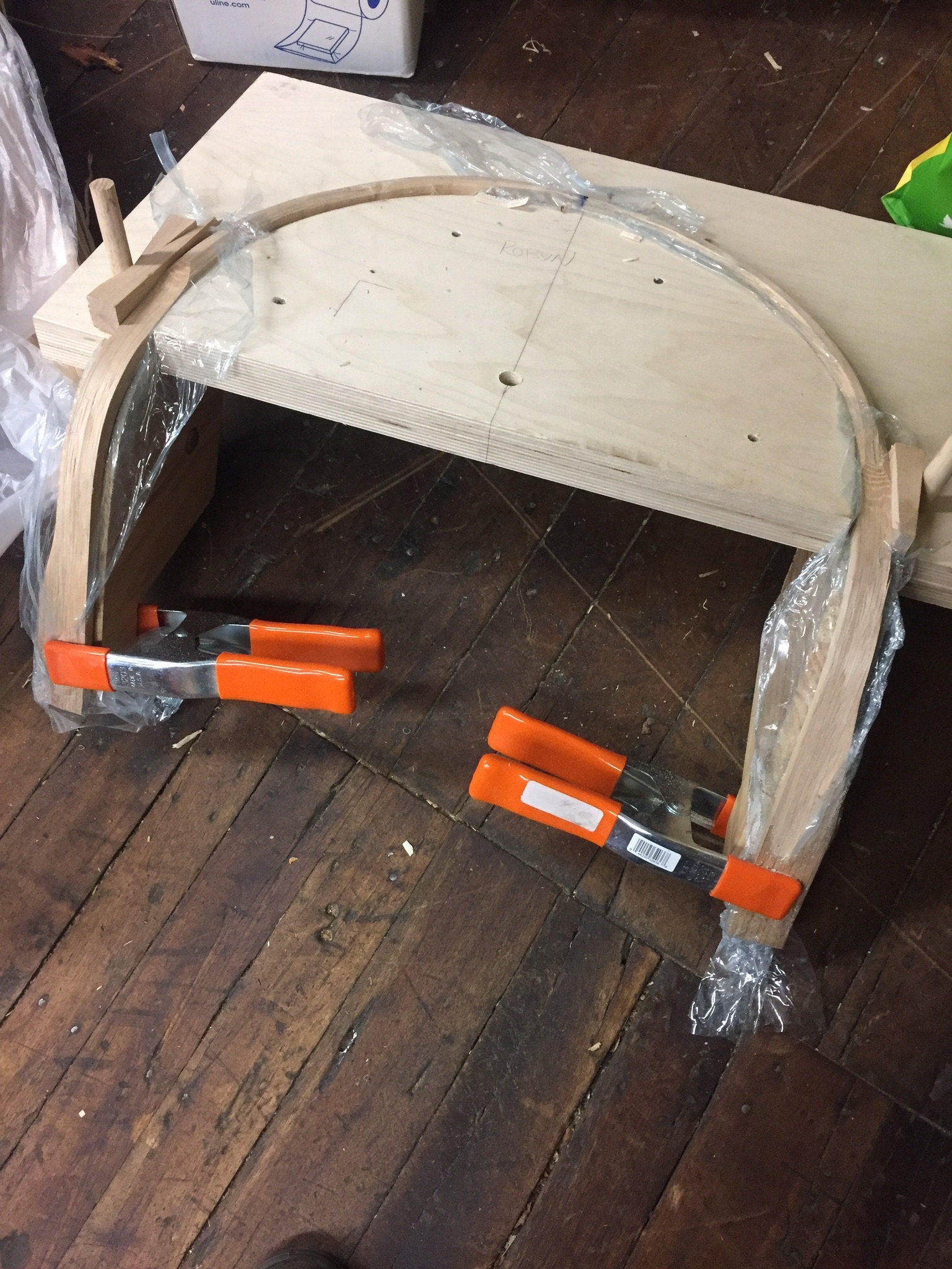Ok, perhaps that's a little overstated, and I know for a fact that there are more than 10 important points to successfully painting a chair, but this is a list that I put together to stress some key details of milk painting.
Thou Shalt make Samples…Copious Samples....it's essential to obey the proper drying times. If you let the paint harden fully, you get much easier results handling it. For instance, if you want to layer the paint colors, letting the undercoat harden for a few days will make it less likely to redissolve and mix with the topcoat color. If you want to wipe away lots of the color you just painted, doing it sooner while it's still soft will allow this. The paint gains hardness over days, not hours. If you want to polish it to a sheen, harder paint will be better, otherwise it's like trying to polish talc.
Thou Shalt mix thick paint (my favorite is from Real Milk Paint Co., let it settle and mix occasionally for hours and then add water to desired consistency
Thou Shalt let it dry…fully… at least overnight
Thou Shalt not try to “touch up” just painted areas, thus building up too much paint and causing problems
Thou Shalt rub off excess paint in-between coats with burlap or mirka mirlon pads
Thou Shalt sand any scraped or sanded areas after first coat of paint dries and repaint
Thou Shalt either let undercoat dry fully before changing colors or add very thin coat of shellac between colors to create separation of colors. The shellac should be nearly non existent in the mix of alcohol, just enough to keep the undercoat from dissolving. The first coat on top of the shellac will be a bit "slippery", so be prepared to let it dry and add another for a more consistent cover.
Thou shalt use trizact 3000 grit pad to smooth paint before final burnishing and oiling with burlap. This stuff looks like a Dr. Scholl's shoe insert, but it tames the coarse surface of the paint before oiling.
Thou shalt let oil dry, my favorite is a mix of satin 3054 osmo for the first coat and a mix of satin/gloss 3011 for the final 2 coats, both available from WorldClassSuppy.com
Thou shalt smooth the finish after the first coat of oil with a gold mirka pad before moving on to the satin/gloss mix.
One of the biggest differences between the brands of Real Milk Paint and Old Fashioned Milk paint is that the Real Milk Paint is not able to burnish to a high polish before oiling. The idea is to keep it thin on the surface and use the burlap, mirka and trizact to get the texture smooth. It is the oil that gives the sheen. It may seem like more work, but the rubbing isn't as intense as burnishing the Old Fashioned Paint, plus, with Old Fashioned, it's more of a one way street. If you screw up or want to add paint after burnishing or oiling, you might have trouble. I've actually painted Real Milk Paint on top of Osmo and other oils with no adhesion issues, it's just an easier paint to work with when trying to do fine work. Good luck!



